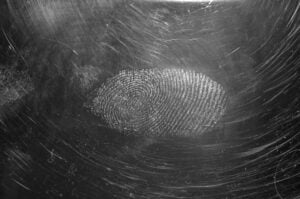Fingerprint analysis, also known as dactyloscopy, is a crucial part of forensic science, the branch of science that helps solve crimes. It’s like a detective tool, but instead of using a magnifying glass, scientists use the unique patterns of loops, whorls, and arches found on our fingers. No two people have ever been found to have identical fingerprints, not even identical twins.

The History of Fingerprinting
The story of fingerprinting started long ago. Ancient Babylonians pressed fingerprints into clay to seal business deals. But it wasn’t until the late 19th century that fingerprints found their place in crime-solving. Sir Francis Galton, an English scientist, figured out that fingerprints don’t change as we grow up and published a book in 1892 explaining how they could be used to tell people apart. His work inspired another scientist, Sir Edward Henry, to create a system in 1897 to classify these unique patterns, making it easier for police to match fingerprints found at crime scenes with the suspects.
How Is Fingerprint Analysis Done?
It’s pretty cool how experts collect and analyze fingerprints at a crime scene. They may dust surfaces with powder to find latent prints – the ones not visible to the naked eye – or they might use chemicals like ninhydrin, which can make prints appear on paper and fabrics by reacting with amino acids left by our skin. Once a print is collected, it’s usually scanned into a computer. A special software then looks for matches with fingerprints in a database.
The Power and Problems of Prints
Fingerprints have been superheroes in solving countless cases. They can place someone at a crime scene and have put many bad guys behind bars. But here’s where we must slow down and think. Just because fingerprints are unique doesn’t mean the methods used to collect and study them are perfect.
Mistakes can happen, especially when humans are involved. Sometimes, the prints at a scene are smudged or only partial prints are left. This can make it tricky because a partial print could wrongly seem to match the wrong person. And unlike computers that rely on binary codes of 0s and 1s, translating the swirling lines of a fingerprint isn’t always black or white.
Also, not all fingerprint examiners have the same level of skill or experience, which can lead to different interpretations of the same print. Think of it like reading a handwritten note. Some people have neat handwriting that’s easy to read, while others scribble in a way that can make you scratch your head in confusion.
Innocent Until Proven by a Print?
Now, let’s talk about the really serious part. There have been cases, although rare, where people were wrongly convicted because of an error in fingerprint analysis. Remember, humans are doing the analyzing and people can make mistakes. In 2004, a man named Brandon Mayfield was wrongly linked by the FBI to a bombing in Spain entirely based on a fingerprint. It was a terrible error that could have cost him his freedom if not for the real suspect being found. This shows that even with robust techniques, there’s still a chance, however small, that an innocent person could be accused of a crime they didn’t commit because of a misunderstood print.
Beyond the Prints
Because of these glitches, the forensic community and law enforcement agencies are continuously working to improve fingerprint analysis. They’re making sure there are strong guidelines for when and how to use fingerprints in investigations and trials. Courts are also getting wiser about the evidence and sometimes ask for additional proof before concluding that a fingerprint is an undeniable link to a suspect.
In today’s world, where technology and science are advancing rapidly, fingerprint analysis continues to evolve. Researchers are working hard on making the analysis process more foolproof. Additionally, other types of evidence like DNA are often used alongside fingerprints to ensure the right person is tied to a crime.
A Handy Conclusion
To wrap it all up, fingerprint analysis has been a groundbreaking tool in forensic science with a rich history of helping solve crimes. While it’s powerful, the method is not without its imperfections and requires meticulous work to prevent mistakes. As with all human endeavors, the science of fingerprinting is always learning and improving, striving to reach that perfect balance of reliability and precision in the unwavering pursuit of justice.

